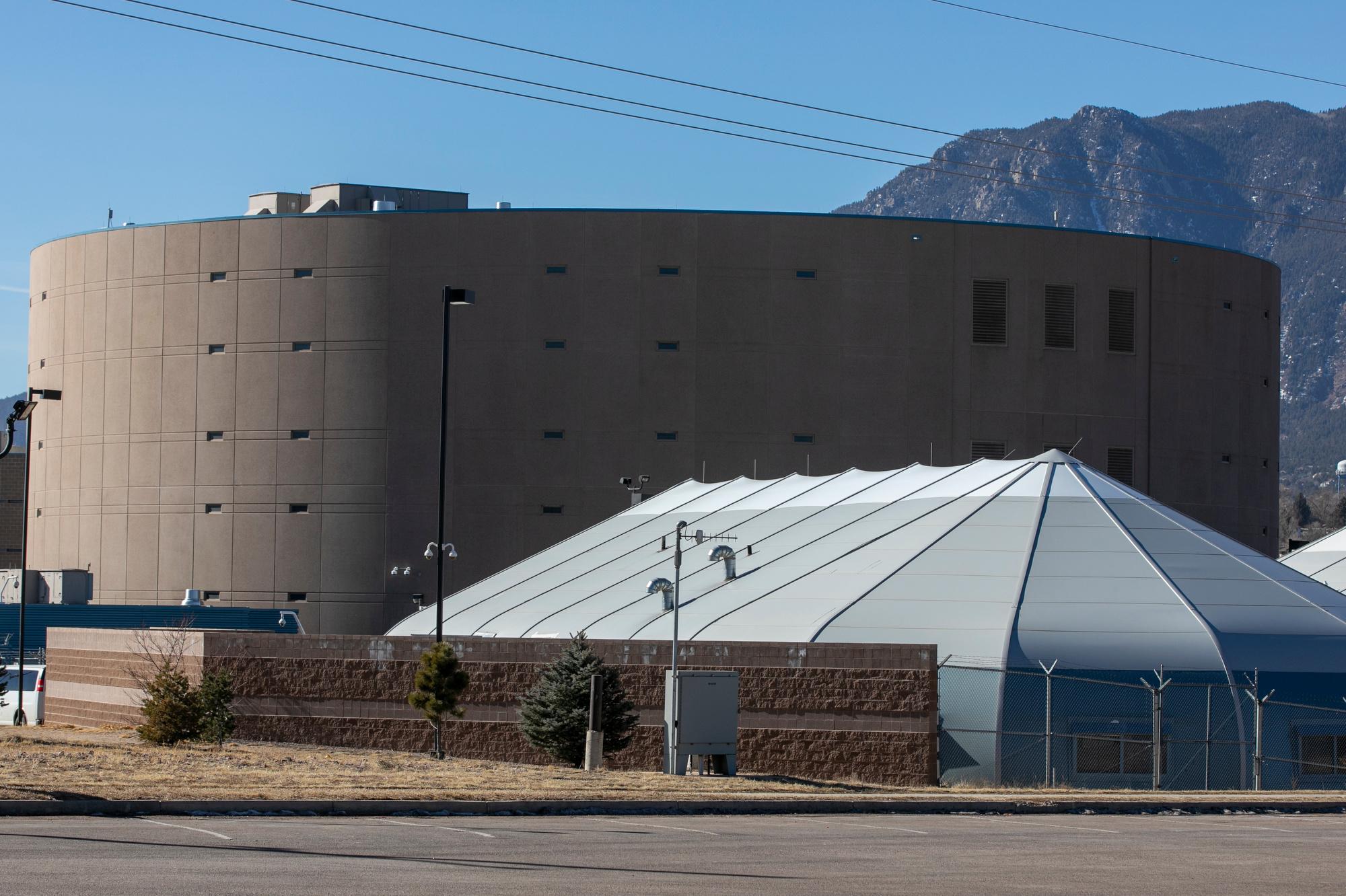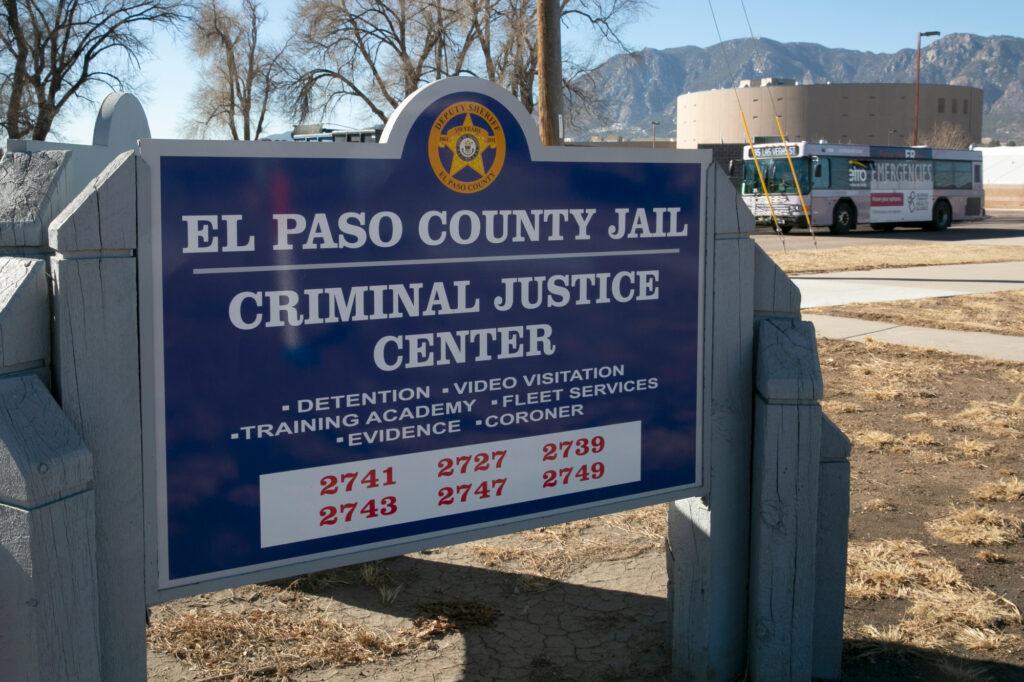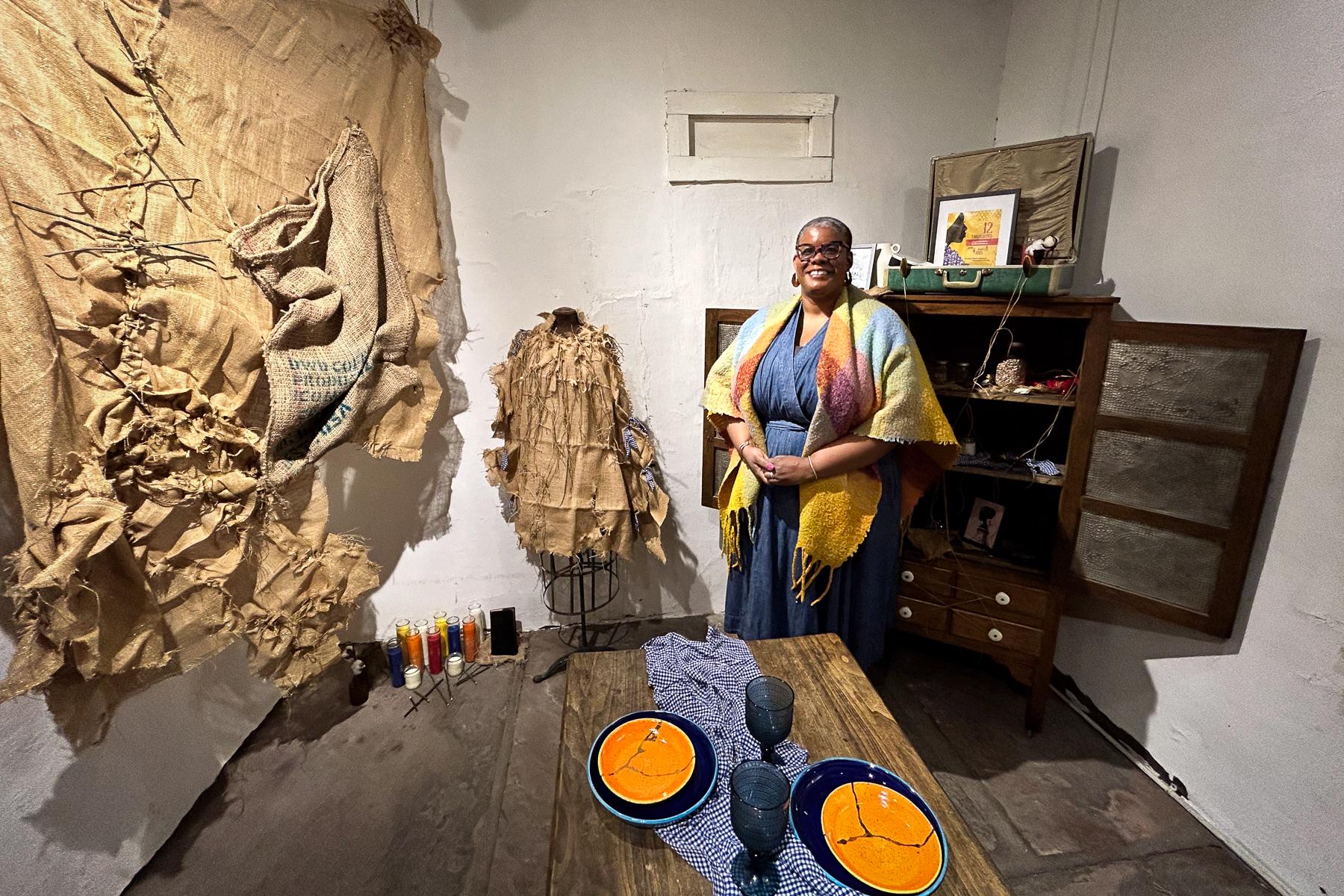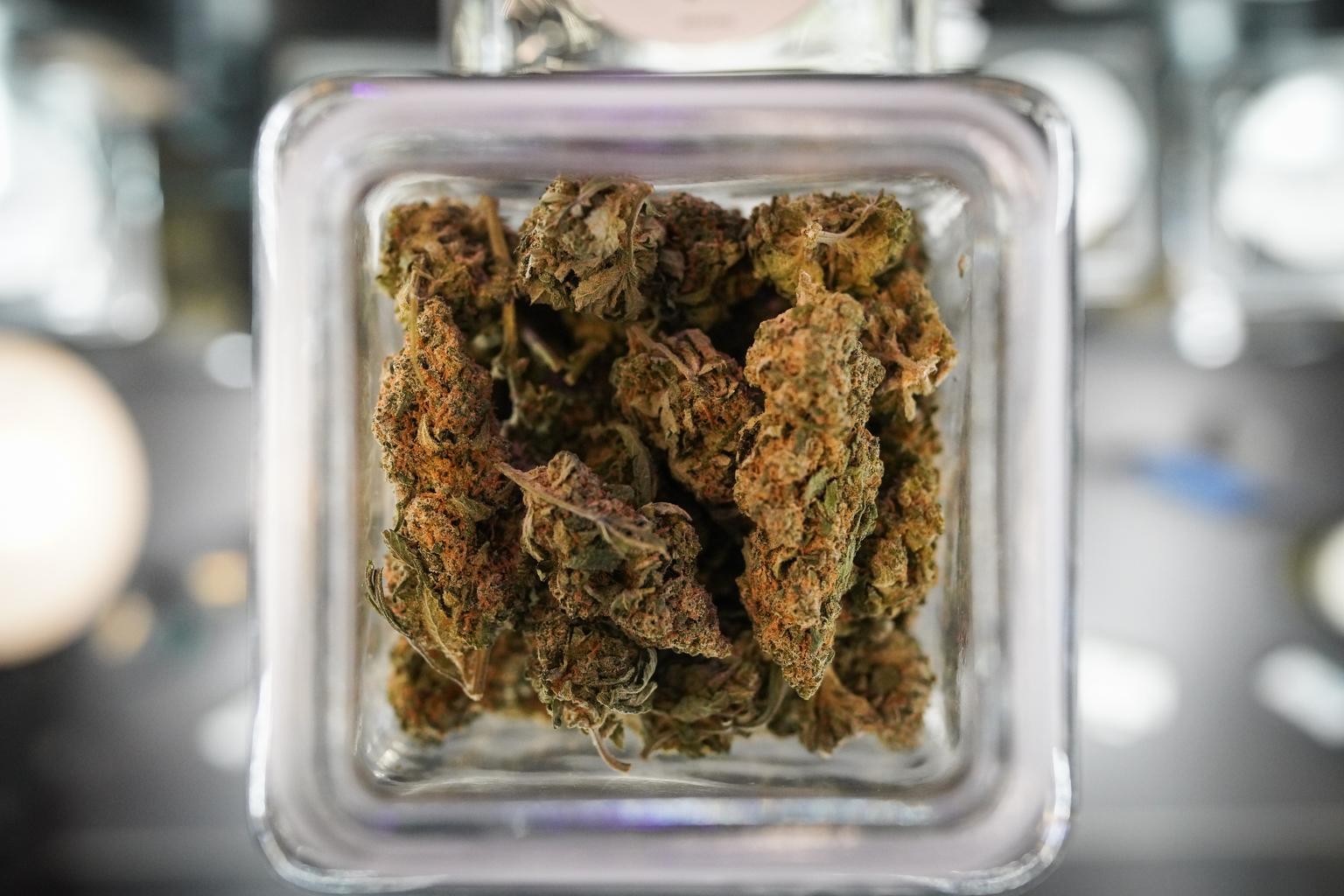
A refurbished locker room for deputies. A new training facility and high-tech locks and security cameras. A $600,000 conveyer belt to move inmate property from one place to another and new doors throughout.
All those renovations at the El Paso County Jail — some of them part of a longstanding wish list — were paid for with federal COVID-19 relief funds.
But it took until November for officials to furnish inmate face coverings inside the jail.
The predictable result was that even as almost $16 million in construction was underway at the jail, inmates and corrections deputies were suffering, unmasked, through the state’s worst jail outbreak.
In a single week, more than 800 inmates and 73 staff tested positive for COVID-19.
County officials say it was the early death of a 41-year-old sheriff’s deputy that sparked them to go after federal cash to make improvements inside the jail.
Sheriff’s officials and county leaders say that they requested and used federal CARES Act funding for projects — some that had been contemplated long before the pandemic — even though federal guidance specifically asked local governments not to fund existing wish lists that didn’t have anything to do with public health.
“The CARES Act provides that payments from the Fund may only be used to cover costs that— are necessary expenditures incurred due to the public health emergency with respect to the Coronavirus Disease 2019,” guidance from the U.S. Treasury Department states.
The guidance further points out that the money should only pay for things that, “were incurred during the period that begins on March 1, 2020, and ends on December 31, 2021.”

El Paso County officials provided justification for each expenditure using COVID-19 prevention as a lever to win the funds.
Today they express surprise that the changes didn’t prevent the largest outbreak in a single jail facility in the state.
“Certainly I thought it would make it, not only our staff members safer, I thought it would make people who were incarcerated safer,” said former El Paso County Commissioner Mark Waller, whose term ended in January. “I’m not a lock expert and I have to rely on the sheriff’s deputies. I feel like they convinced me that it would make people safer and it was the right thing to do.”
Existing projects, new dollars
The second week of November was the worst of it for infections. That’s when 859 inmates and 73 staff members at the El Paso Jail tested positive for COVID-19 as the state entered a third wave of the disease caused by the coronavirus.
The conflagration caught county health officials and sheriff’s deputies off guard, as captured in more than 300 pages of emails between public health and sheriff’s office officials during October and November. CPR was charged $200 to obtain the emails through an open records request.
Those emails show officials deeply worried about the spread from the jail into the community.
“Are you able to provide me with an estimate of the numbers of inmates that are either in quarantine or isolation that are released in any given day or week?” wrote Marigny Klaber, an epidemiologist with El Paso County Public Health to Andrew Prehm, at the sheriff’s office on Nov. 2. “Public health is trying to understand the potential community impact.”
Another email from Klaber raised concerns about the jail’s outbreak spreading to the homeless community.
“The last thing we desire is for someone who is infectious to show up to one of the homeless shelters and spread the wealth,” she wrote, again, to Prehm on Nov. 6.
Statistics show that concern was justified.
Following the jail outbreak, COVID-19 cases jumped among people experiencing homelessness in Colorado Springs, according to Pikes Peak Community Health Partnerships. By early December, El Paso County was uncovering more than 700 new cases each day, the peak of the pandemic in the community.
“We were pretty frustrated when the outbreak happened in the jail and then to have it blow up so quickly,” Waller said. “And I think there were a lot of questions at the time, ‘OK, are we doing everything we could be doing here?’”
Officials acknowledge that some of the money they spent on capital projects went to needs they had identified before COVID-19 — particularly the doors, cameras and locks, the priciest item at almost $9 million — and that when the federal government offered money to help with pandemic expenses they felt like it was an opportunity to pay for the improvements.
In an 11-minute video sent to the El Paso County Commissioners pitching the jail’s “critical needs,” there was no mention of COVID-19, but the video spent several minutes talking about how dangerous the doors were and how guards and inmates were vulnerable to attacks in the current situation.
Weighing heavily on public officials, Waller said, was the fact that in the first weeks of the pandemic they lost a young sheriff’s deputy to COVID-19. Deputy Jeff Hopkins, a 19-year department veteran, died on April 1, 2020. He had been working intake and release at the jail and contracted it there.
“Losing that sheriff’s deputy so early on … was incredibly impacting as we were thinking about making decisions down the road,” he said.

Waller said Hopkins’ death helped push them to go after the money they hoped would make the jail safer for everyone.
In interviews with CPR News, jail officials cited COVID-19 mitigation strategies in all of their decisions to improve the jail.
The new doors, they said, are necessary to keep inmates separated while the facility was in lockdown, and also make it easier to keep inmates with the virus apart from those without. The cameras improve vision angles in the locked-down cells. The new deputy locker rooms make it possible for each deputy to have his or her own locker, so they don’t have to touch another deputy’s belongings or leave stuff in their cars. The conveyor belt system — similar to what dry-cleaners use — now keeps inmate property organized inside sealed plastic bags, so deputies didn’t have to rifle through the clothes and other personal belongings of people being booked inside the jail.
“Had COVID not happened, we wouldn’t have done these things because we wouldn’t have had to,” said El Paso County Sheriff’s spokeswoman Jacqueline Reed. “This was an aggressive undertaking because all of the money had to be spent before the end of 2020.”
Jails pose a unique challenge
Earlier in the pandemic, there were efforts statewide to reduce jail populations in the name of social distancing.
In El Paso, the state’s largest jail, inmate numbers dropped from between 1,400 and 1,600 to a little more than 900 in June. As the year wore on, that effort lost steam and the numbers crept back up. In November, there were between 1,200 and 1,300 people being held at the county’s Criminal Justice Center.
Reed, the sheriff’s spokeswoman, said the jail tried their best throughout the summer and fall to screen inmates coming in for COVID-19. They took temperatures and asked about possible symptoms and exposures.
But the county didn’t start testing everyone upon entry until Nov. 6, making it possible for people with asymptomatic infections, including deputies, to bring the virus inside.
Jails pose a unique challenge because so many people come and go daily.
Statewide, jail outbreaks have accounted for more than 4,500 COVID cases since the pandemic began, according to Colorado Department of Public Health data, making them among the largest hotspots in Colorado.
And no jail had a larger outbreak than El Paso; the outbreak that began in late October has now stretched into its sixth month, with 1,272 cases reported as of the first week of April.
“We were doing everything we could,” Reed said. “If anyone answered in the positive for any COVID questions, they were isolated, but again, you can only base that on the information you’re given.”
‘You are considered a facility with a confirmed outbreak’
Despite the effort to put in mitigation systems — like the new doors — by late fall, the jail was struggling to contain the virus.
Emails between the public health department and sheriff’s department show officials trying to get a handle on even more protective measures in the face of the wildfire-like spread of the virus inside.
“At this point, you are a facility with a confirmed outbreak,” Klaber, an epidemiologist with El Paso County Public Health wrote to Brad Shannon, detentions bureau chief at the sheriff’s office on Oct. 28. “May I please have a line list for the individuals in your facility who are confirmed or suspect for having COVID-19. You will want to include individuals who were ill two weeks prior to your confirmed case.”
But, as the infections spread, the jail struggled to respond, emails show.
The jail staff was looking at other ways to potentially make the building safer for those on the inside, including the decision to spend $113,000, also from the federal CARES grant, on ventilation improvements.
Eventually, county officials enlisted the National Guard to come in and do mass testing.
The fight to get masks
Inside the jail, inmates grew increasingly angry that they weren’t allowed masks.
Cecil Haynes, 35, who served three months at the end of last year and contracted COVID-19 inside, said inmates were glued to news coverage about the outbreak and grew increasingly impatient at the officials’ response to reporters.
Haynes said it didn’t reflect what was happening inside.
“Everyone was in there coughing on each other. I’m laying on my bunk and I’m literally at arm’s length to touch the next person,” Haynes said. “I sent hundreds of messages … I had to get a T-shirt and cut off the sleeve and wear that as a face mask so I could protect myself. But that didn’t work, by the time I decided to do that, I’d already contracted it.”
One deputy told inmates that he was going to let the virus “run its course” through the population because there were so many people infected, according to court filings.
At that time, county officials said, public health officials were still not recommending inmates wear masks in their housing units.

This contradicted a message El Paso County Sheriff Bill Elder posted on Facebook last summer, shortly after Gov. Jared Polis’ mask mandate was issued.
“I just encourage people, wear a mask,” he said. “Let’s try to make this as easy as we can on the community and not try to make it more difficult on individuals.”
Officials said, at the time, they had a shortage of PPE and that many masks had metal inside of them and so they considered them contraband.
In July, officials furnished masks to inmates when coming to and from the court, but once inside, they were required to discard them.
Inmates were even punished for fashioning their own masks for protection, according to an ACLU lawsuit against the sheriff for how he handled COVID-19 prevention measures.
“The jail environment cannot be compared to a restaurant environment, for example … The guidance was from public health that masks were not really required,” Reed said. “So that’s the guidance we required.”
Haynes describes a “riot” inside the jail the second week of November, the same week more than 900 people tested positive. He said inmates refused to eat, refused to lock down and refused to follow directions.
“They’re sitting there, lying to the general public, our family members, everyone,” he said. “And finally, they sent in a bunch of deputies, the sergeants, and they said, ‘well, what would it take to get you to stop this?’ And we asked for masks and the very next day they brought us masks.”
Sheriff spokeswoman Reed disputes that account, saying there was no “riot” on Nov. 6 but she confirmed that starting that first week of November, officials agreed to give inmates cloth masks.
“There was nothing even close to an insurrection,” she said. “There were a few inmates who were upset they were not issued masks, so they decided to go to the media and at least one did an interview. Every inmate is given a cloth mask and approximately 10 percent of inmates wear them on a daily basis.”
In December, the ACLU of Colorado filed its suit against El Paso County Sheriff Bill Elder alleging negligence on behalf of a class of all current and future prisoners.
El Paso County officials quickly agreed to a preliminary injunction with several stipulations, including supplying masks, taking inmate temperatures twice a day, housing COVID-19 positive inmates in isolation from uninfected inmates and requiring medical staff to screen inmates for pre-existing conditions that would make contracting COVID-19 particularly dangerous.
Even while acknowledging that some of the upgrades had been sought long before the pandemic, Reed said other improvements — like improved ventilation and new doors and locks — are helping county officials keep a lid on future COVID-19 cases.
“We absolutely believe the improvements have and will continue to help the facility keep the outbreaks at bay,” Reed said.
Mark Silverstein, legal director of the ACLU of Colorado, agreed.
He is still negotiating settlement agreements with El Paso County lawyers on behalf of hundreds of inmates.
“To the jail’s credit, they responded promptly to the lawsuit and quickly agreed,” he said. “And now it looks like they’ve been doing pretty well on the outbreak front.”
Cecil Haynes is currently back in jail. But he said in an earlier interview that he doesn’t have any lingering COVID-19 symptoms and feels better.
He said he’s happy that El Paso County has improved conditions inside the jail, but he’s still “salty” about his experience last fall.
“It kind of makes me feel bitter and kind of good at the same time,” Haynes said. “I know now the seriousness of the neglect of what they are doing.”









